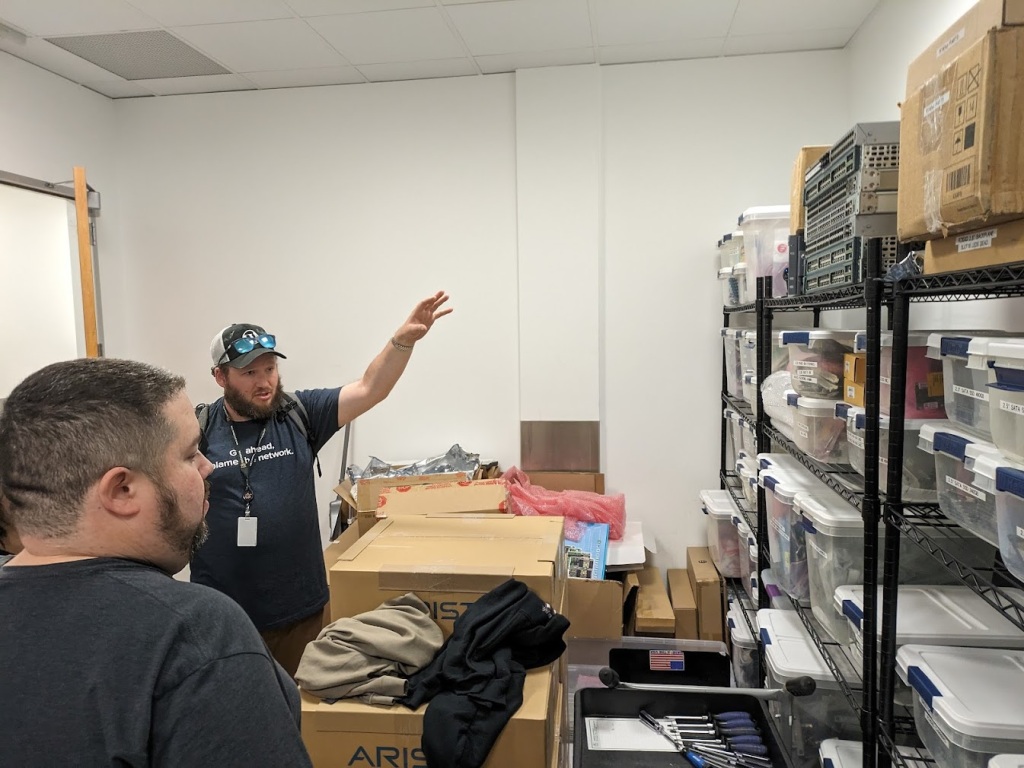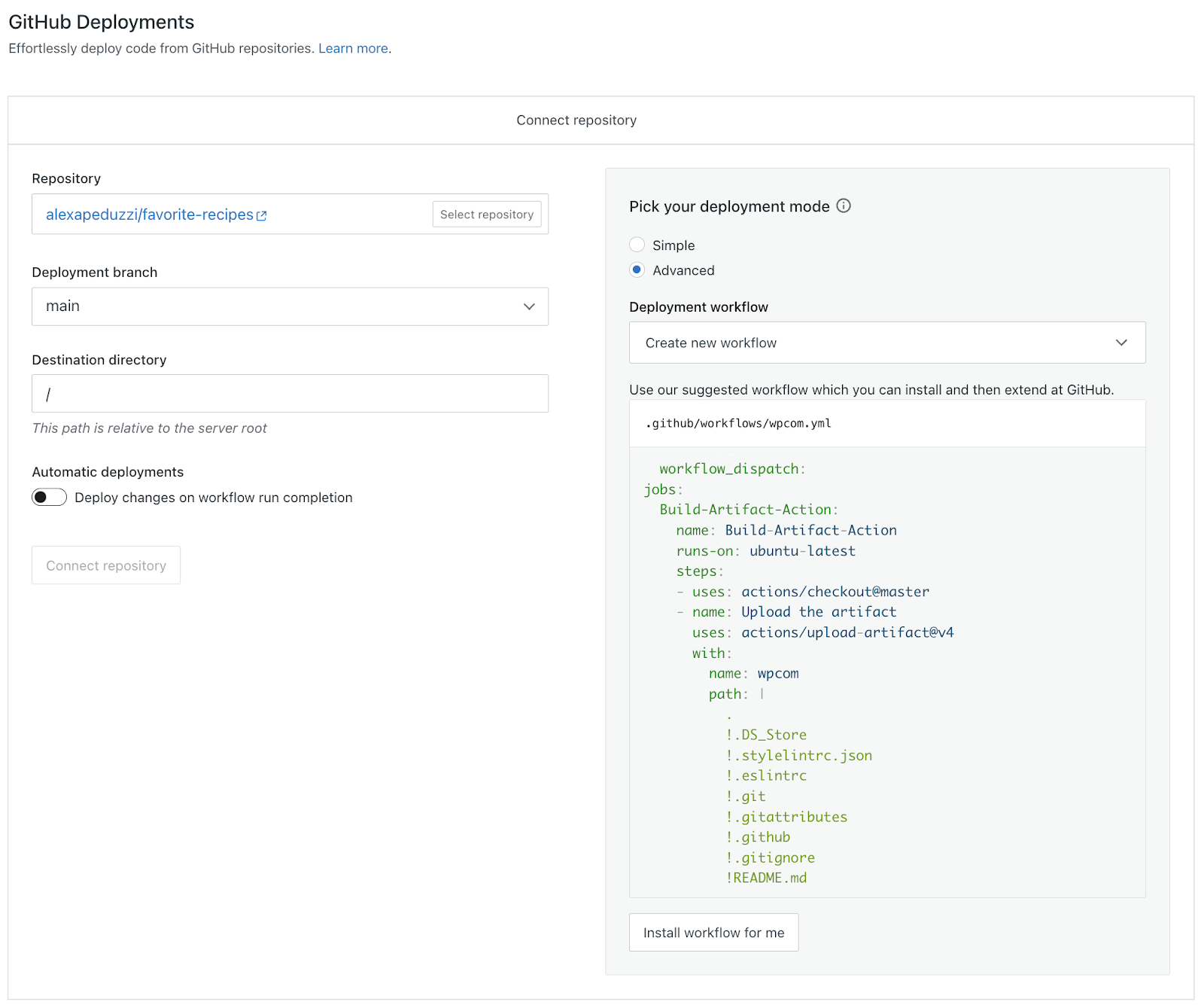WordPress 6.5 “Regina”
Posted by download | Posted in Software | Posted on 02-04-2024

Say hello to WordPress 6.5 “Regina,” inspired by the dynamic versatility of renowned jazz violinist Regina Carter. An award-winning artist and storied jazz educator known for transcending genre, Regina’s technical foundations in classical music and deep understanding of jazz have earned her the reputation of boldly going beyond what’s possible with the violin.
Let the stunning twists and subtle turns of Regina’s genre-bending sound surprise you as you explore everything 6.5 offers.
This latest version of WordPress puts more power into the details. It offers new and improved ways to fine-tune and enhance your site-building experience, letting you take control in ways that make it your own. You’ll find new ways to manage your site’s typography, more comprehensive revisions available in more places, and a collection of Site Editor updates paired with impressive performance gains to help you get things done smoother and faster.
“Regina” also marks the introduction of some breakthrough developer tools that will start transforming how you use and extend blocks to craft engaging experiences. The Interactivity API opens up a world of creative front-end possibilities, while the Block Bindings API makes dynamic connections between blocks and data seamless. These, among other developer-focused improvements and updates, are ready to help you evolve how you build with WordPress.
What’s inside 6.5
Add and manage fonts across your site
The new Font Library puts you in control of an essential piece of your site’s design—typography—without coding or extra steps. Effortlessly install, remove, and activate local and Google Fonts across your site for any Block theme. The ability to include custom typography collections gives site creators and publishers more options when it comes to styling content.

Get more from your revisions—including revisions for templates and template parts
Work through creative projects with a more comprehensive picture of what’s been done—and what you can fall back on. Get details like time stamps, quick summaries, and a paginated list of all revisions. View revisions from the Style Book to see how changes impact every block. Revisions are also now available for templates and template parts.

Play with enhanced background and shadow tools
- Control the size, repeat, and focal point options for background images in Group blocks so you can explore subtle or splashy ways to add visual interest to layouts.
- Set aspect ratios for Cover block images and easily add color overlays that automatically source color from your chosen image.
- Add box shadow support to more block types and create layouts with visual depth, or throw a little personality into your design.

Discover new Data Views
Every piece of your site comes with a library of information and data—now, you can find what you need quickly and organize it however you like. Data views for pages, templates, patterns, and template parts let you see data in a table or grid view, with the option to toggle fields and make bulk changes.

Smoother drag-and-drop
Feel the difference when you move things around, with helpful visual cues like displaced items in List View or frictionless dragging to anywhere in your workspace—from beginning to end.

Improved link controls
Create and manage links easily with a more intuitive link-building experience, like a streamlined UI and a shortcut for copying links.

What’s fresh for developers in 6.5
Bring interactions to blocks with the Interactivity API
The Interactivity API offers developers a standardized method for building interactive front-end experiences with blocks. It simplifies the process, with fewer dependencies on external tooling, while maintaining optimal performance. Use it to create memorable user experiences, like fetching search results instantly or letting visitors interact with content in real time.
Connect blocks to custom fields or other dynamic content
Link core block attributes to custom fields and use the value of custom fields without creating custom blocks. Powered by the Block Bindings API, developers can extend this capability further to connect blocks to any dynamic content—even beyond custom fields. If there’s data stored elsewhere, easily point blocks to that new source with only a few lines of code.
Add appearance tools to Classic themes
Give designers and creators using Classic themes access to an upgraded design experience. Opt in to support for spacing, border, typography, and color options, even without using theme.json. Once support is enabled, more tools will be automatically added as they become available.
Explore improvements to the plugin experience
There’s now an easier way to manage plugin dependencies. Plugin authors can supply a new Requires Plugins header with a comma-separated list of required plugin slugs, presenting users with links to install and activate those plugins first.
From fast to faster: Performance updates
This release includes 110+ performance updates, resulting in an impressive increase in speed and efficiency across the Post Editor and Site Editor. Loading is over two times faster than in 6.4, with input processing speed up to five times faster than the previous release.
Translated sites see up to 25% improvement in load time for this release courtesy of Performant Translations. Additional performance highlights include AVIF image support and improvements for registering block variations with callbacks.
A tradition of inclusion
This release includes more than 65 accessibility improvements across the platform, making it more accessible than ever. It contains an important fix that unblocks access to the admin submenus for screen reader users and others who navigate by keyboard. This release also adds fixes to color contrast in admin focus states, positioning of elements, and cursor focus, among many others, that help improve the WordPress experience for everyone.
Learn more about WordPress 6.5
Check out the new WordPress 6.5 page to learn more about the numerous enhancements and features of this release—including short demos of some of the highlighted features.
Explore Learn WordPress for quick how-to videos, online workshops, and other free resources to level up your WordPress knowledge and skills.
Check out the WordPress 6.5 Field Guide for detailed technical information and developer notes to help you build with WordPress and get the most out of this release. Don’t forget to subscribe to the Developer Blog for developer updates, feature tutorials, and other helpful WordPress content from a developer perspective.
For more information about installation, file changes, fixes, and other updates, read the 6.5 release notes.
The 6.5 release squad
Every release has many moving parts with its own triumphs and challenges. It takes a dedicated team of enthusiastic contributors to help keep things on track and moving smoothly. 6.5 is made possible by a cross-functional group of contributors, always ready to champion ideas, remove blockers, and resolve issues.
- Release Lead: Matt Mullenweg
- Release Coordinators: Akshaya Rane, Héctor Prieto, Mary Baum
- Core Tech Leads: David Baumwald, Pascal Birchler
- Editor Tech Leads: David Smith, Riad Benguella
- Core Triage Leads: Ahmed Kabir Chaion, Jb Audras, Rajin Sharwar
- Editor Triage Leads: Anne McCarthy, Fabian Kägy
- Design Leads: Benjamin Zekavica, Rich Tabor
- Marketing and Communication Leads: Dan Soschin, Lauren Stein
- Documentation Leads: Estela Rueda, Leonardus Nugraha, Steven Lin
- Performance Leads: Joe McGill, Mukesh Panchal
- Test Leads: Olga Gleckler, Patrick Lumumba, Vipul Ghori
- Default Themes Leads: Carolina Nymark
Thank you, contributors
WordPress believes in democratizing publishing and the freedoms that come with open source. Supporting this idea is a global and diverse community of people collaborating to strengthen the software.
WordPress 6.5 reflects the countless efforts and passion of around 700 contributors in at least 57 countries. This release also welcomed over 150 first-time contributors!
Their collaboration delivered more than 2,500 enhancements and fixes, ensuring a stable release for all—a testament to the power and capability of the WordPress open source community.
!Benni · _ck_ · Aaron Jorbin · Aaron Robertshaw · Abha Thakor · abletec · acosmin · Adam Silverstein · Adarsh Akshat · admcfajn · Ahmed Chaion · Ahmed Saeed · Akash Muchandikar · Aki Hamano · Akira Tachibana · akmelias · Akramul Hasan · Akshaya Rane · Alain Schlesser · Alan Fuller · Alex · Alex Concha · Alex King · Alex Kirk · Alex Lende · Alex Mills · Alex Stine · Alexander · Alexandre Buffet · Amber Hinds · Amy Hendrix (sabreuse) · Amy Kamala · Anand Upadhyay · Anders Norén · Andrea Fercia · Andrei Draganescu · Andrei Lupu · Andrew Hayward · Andrew Hutchings · Andrew Nacin · Andrew Norcross · Andrew Ozz · Andrew Serong · andrewleap · Andrii Balashov · André Maneiro · Andy Fragen · Andy Peatling · Aneesh Devasthale · Ankit K Gupta · Ankit Panchal · Anne McCarthy · Anthony Burchell · Antoine · Anton Lukin · Anton Timmermans · Anton Vlasenko · Antonella · Antonio D. · Antonis Lilis · arena94 · Ari Stathopoulos · Arslan Kalwar · Artemio Morales · Arthur Chu · Arun Chaitanya Jami · Arun Sharma · Arunas Liuiza · Asad Polash · Ashish Kumar (Ashfame) · Asish Chandra Mohon · audunmb · Aurooba Ahmed · Austin Matzko · axwax · Ayesh Karunaratne · Béryl de La Grandière · bahia0019 · Balu B · bangank36 · Barry · Barry · Bart Kalisz · bartkleinreesink · Beatriz Fialho · Beau Lebens · Beda · ben · Ben Dwyer · Ben Hansen · Ben Huson · Ben Lobaugh (blobaugh) · Ben Ritner - Kadence WP · Ben Word · Benjamin Zekavica · benjaminknox · Benoit Chantre · Bernhard Reiter · bernhard-reiter · billseymour · Biplav · Birgit Pauli-Haack · bobbingwide · Boone Gorges · born2webdesign · Brad Jorsch · Brad Parbs · Brad Williams · Brandon Kraft · Brandon Lavigne · Brian Coords · Brian Fischer · Brian Gardner · Brian Haas · Brian Henry · Brooke · burnuser · camya · Carlo Cannas · Carlos Bravo · Carlos G. P. · Carolina Nymark · cenkdemir · cfinnberg · Chad Chadbourne · chased@si.edu · chiilog (Chiaki Okamoto) · Chouby · Chris David Miles · Chris Reynolds · chriscct7 · christian-dale · Christopher · Chrystl · codepo8 · Colin Devroe · Colin Stewart · Corey Worrell · Cory Birdsong · Courtney Robertson · Creative Slice · crstauf · Cullen Whitmore · Cupid Chakma · cvorko · cybeardjm · Cyberchicken · Damon Cook · Dan Soschin · Daniel Bachhuber · Daniel Dvorkin · Daniel Käfer · Daniel Richards · Daniel Schutzsmith · danieldudzic · Daniele Scasciafratte · danieltj · darerodz · Darren Ethier (nerrad) · Darshit Rajyaguru · darssen · David Artiss · David Baumwald · David Biňovec · David Calhoun · David Herrera · David Levine · David Lingren · David Perez · David Smith · Dean Sas · Denis de Bernardy · Denis Žoljom · Dennis Hipp · Dennis Snell · Dennys Dionigi · Derek Blank · Derek Herman · Derek Springer · designsimply · Desrosj Bot · Devin Curtis · Devin Walker · Dharmesh Patel · Dhrumil Kumbhani · Dhruvi Shah · Dilip Bheda · Dion Hulse · Dominik Schilling · Dougal Campbell · Drew Jaynes · Dustin Falgout · Earle Davies · Ehtisham Siddiqui · Ella van Durpe · Emerson Maningo · emirpprime · Emmanuel Hesry · Endymion00 · Eric Andrew Lewis · Erick Hitter · Erik · Estela Rueda · Fabian Kägy · Fabian Todt · Fabio Rubioglio · Faisal Ahammad · Faisal Ahmed · Faisal Alvi · Fanly · Feast Design Co. · Felipe Elia · Felix Arntz · fgiannar · Florent Hernandez · Francesca Marano · FrancescoCarlucci · Frank Jäger · Frank Laszlo · Frank Wazeter · fushar · Gajendra Singh · Gan Eng Chin · Garbiñe · Gary Pendergast · gavande1 · Gennady Kovshenin · George Mamadashvili · George Stephanis · Gerard Reches · Gerardo Pacheco · Girish Panchal · Giuseppe Mazzapica · Glen Davies · goldenapples · Grant M. Kinney · Greg Ziółkowski · gregbenz · Guido Scialfa · gvgvgvijayan · H.M. Mushfiqur Rahman · hanneslsm · Hardik Raval · Hareesh S · Harsh Gajipara · Harsh Patel · Hasanuzzaman Shamim · Heather Lounsbury · Heiko Lübbe · Helen Hou-Sandi · HelgaTheViking · Hemant Tejwani · Hidekazu Ishikawa · Himani Panchal · Hit Bhalodia · Hitesh Talpada · Hossein · Howdy_McGee · Hridoy Mozumder · Hrithik Dalal · Hugh Lashbrooke · Hugo Chinchilla · hugod · huubl · Huzaifa Al Mesbah · Héctor Prieto · Ian Belanger · Ian Dunn · idad5 · Ignacio Cruz Moreno · ignatiusjeroe · Ihtisham Zahoor · Ilya Zolotov · ironprogrammer · Isabel Brison · iseulde · IT Path Solutions · itecrs · Ivan Zhuck · Jacob Cassidy · jadpm · James Collins · James Koster · James Roberts · Jamie Blomerus · Jamie Perrelet · Jan Thiel · jane · Janis Elsts · jansan · Japh · Jarda Snajdr · jarednova · Jason Adams · Jason Crist · Jason Crouse · Jason Johnston · Jason LeMahieu (MadtownLems) · Javier Casares · Jayadevan k · jbobich · Jean-Baptiste Audras · Jeff Ong · Jeffrey de Wit · Jeffrey Paul · Jenny Dupuy · Jeremy Felt · Jeremy Herve · jeryj · Jesús Amieiro · Jessica Lyschik · jghazally · Jip Moors · jivygraphics · jltallon · Joan · Joe · Joe Dolson · Joe Hoyle · Joe McGill · Joel James · Joen A. · John Blackbourn · John James Jacoby · johnciacia · Jon Brown · Jon Cave · Jon Surrell · Jonathan Bossenger · Jonathan Brinley · Jonathan Desrosiers · Jonny Harris · joppuyo · jordesign · Jorge Costa · Jorge Vilchez · jornp · Joseph Fusco · Josepha · joshcanhelp · joshuatf · Joy · JR Tashjian · JS Morisset · Juan Aldasoro · JuanMa Garrido · Juhi Saxena · Juliette Reinders Folmer · Justin Tadlock · K M Ashikur Rahman · K. Adam White · KafleG · Kai Hao · Kamrul Hasan · Kari Anderson · Karlijn Bok · Karol Manijak · Karthik Thayyil · Katka · kawsaralameven · Kelly Choyce-Dwan · Kevin Batdorf · Kevin Coleman · Kevin Taron · Kharis Sulistiyono · Kira Schroder · Kishan Jasani · kitchin · Kjell Reigstad · kkmuffme · Knut Sparhell · Koen Reus · Koesper · Konstantin Obenland · Krupa Nanda · Krupal Panchal · Kurt Payne · Kushang Tailor · Kylen Downs · lau@mindproducts.com.au · Laura Adamonis · Lauren Stein · Laurent MILLET · Lax Mariappan · Lena Morita · Leo Muniz · Leonardus Nugraha · Liam Gladdy · LiamMcArthur · Linkon Miyan · liviopv · lkraav · logikal16 · Lovekesh Kumar · luboslives · lucasbustamante · Luis Felipe Zaguini · Luis Herranz · Lukas Pawlik · Lukasz · Luke Cavanagh · Maarten · Madhu Dollu · Madhu Dollu · Maggie Cabrera · Mahbub Hasan Imon · mahnewr · Mahrokh · Malae · manfcarlo · manyourisms · Marc_J · Marcelo de Moraes Serpa · Marco Ciampini · Marcoevich · margolisj · Marie Comet · Marin Atanasov · Mario Santos · Marius L. J. · Mark Howells-Mead · Mark Jaquith · Marko Heijnen · Markus · martin.krcho · Mary Baum · mathewemoore · Matias Benedetto · Matias Ventura · matiasrecondo77 · Matt Mullenweg · Matteo Enna · Max Lyuchin · Maxime Pertici · Mayur Prajapati · Md Hossain Shohel · Md HR Shahin · Meg Phillips · megane9988 · Mel Choyce-Dwan · melcarthus · meta4 · metropolis_john · mevolkan · Micah Wood · Michael Showes · Michal Czaplinski · Michalooki · Miguel Fonseca · miguelsansegundo · Miikka · Mike Bijon · Mike Jolley (a11n) · Mike Schinkel · Mike Schroder · Mikin Chauhan · Milen Petrinski - Gonzo · mimi · mkismy · mnydigital · Mohammad Jangda · Monique Dubbelman · Monzur Alam · Morteza Geransayeh · mreishus · mrwweb · Muhammad Usman Iqbal · Muhibul Haque · mujuonly · Mukesh Panchal · Mumtahina Faguni · Musarrat Anjum Chowdhury · Naoki Ohashi · Naresh Bheda · Nate Allen · Navjot Singh · neffff · Neil Hainsworth · nendeb · NerdPress · Nick Diego · Nick Halsey · Nick Martianov · nickpagz · Nico · Nicole Furlan · Nicole Paschen Caylor · nidhidhandhukiya · Niels Lange · Nihar Ranjan Das · Nik Tsekouras · Nikita · nikmeyer · Nilambar Sharma · Nilo Velez · Niluthpal Purkayastha · niravsherasiya7707 · Nithin John · Nithin SreeRaj · Noah Allen · nosilver4u · Nowell VanHoesen · Nudge Themes · nwjames · obliviousharmony · ockham · oguzkocer · okat · Old account · olegfuture · Olga Gleckler · Paal Joachim Romdahl · Pacicio · pannelars · partyfrikadelle · Pascal Birchler · Patricia BT · Patrick Lumumba · Paul Bearne · Paul Biron · Paul de Wouters · Paul Kevan · Paul Wong-Gibbs · pavelevap · Peter Baylies · Peter Rubin · Peter Westwood · Peter Wilson · petitphp · Philipp Bammes · Philipp15b · Phill · Pieterjan Deneys · Pippin Williamson · Pitam Dey · pmeenan · Pooja Derashri · Pooja N Muchandikar · pooja9712 · pouicpouic · Prashant Baldha · Pratik Kumar · Prem Tiwari · Presskopp · presstoke · prionkor · Rafiq · Rajin Sharwar · Ramon Ahnert · Ramon Corrales · Ramon James · Rashi Gupta · rawrly · rcain · rebasaurus · Remy Perona · Renatho (a11n) · Rene Hermenau · retrofox · Riad Benguella · Rich Collier · Rich Tabor · Rishi Mehta · Rishi Shah · Robert Anderson · Rolf Allard van Hagen · room34 · Ryan Boren · Ryan McCue · Ryan Welcher · Ryann Micua · Ryo · Sé Reed · Sébastien SERRE · Sabbir Hasan · Sachyya · Sadi Mohammad Zaman · sadpencil · Sahil · Saiduzzaman Tohin · Sakib MD Nazmush · Sal Ferrarello · samba45 · Sampat Viral · Samuel Rüegger · Samuel Sidler · Samuel Wood (Otto) · Santiago Cerro López · Sarah Norris · Sarath AR · Satyam Vishwakarma (Satya) · Saxon Fletcher · Sayful Islam · Scott Kingsley Clark · Scott Taylor · scribu · Sergey Biryukov · Sergio de Falco · Seth Rubenstein · Shaharia Azam · Shail Mehta · ShaneF · Shannon Smith · shaunandrews · Shawn Hooper · shidouhikari · Shipon Karmakar · Shreyash Srivastava · Shubham Sedani · siddharth ravikumar · Siobhan · Sirajum Mahdi · sjregan · Soren Wrede · SourceView · sruthi89 · stacimc · Stefano Minoia · Stephen Bernhardt · Stephen Cronin · Stephen Edgar · Stephen Harris · Steven Lin · strarsis · Subrata Sarkar · Sumi Subedi · Sumit Bagthariya · Sumit Singh · SunilPrajapati · Svitlana Sukhoveiko · syamraj24 · Sybre Waaijer · Syed Balkhi · Syed Nuhel · Synchro · Takashi Irie · Takashi Kitajima · Tammie Lister · Tapan Kumer Das · Tara King · Taylor · Taylor Dewey · Taylor Gorman · tazotodua · Teddy Patriarca · Tellyworth · Thakor Darshil · them.es · thinkluke · Thomas Griffin · Thomas Kräftner · threadi · Tim Nolte · timbroddin · Timothée Brosille · Timothy Jacobs · tmatsuur · TobiasBg · tobifjellner (Tor-Bjorn Fjellner) · Tom · Tom Cafferkey · Tom Finley · Tom J Nowell · tomluckies · Tomoki Shimomura · tomsommer · tomxygen · Toni Viemerö · Tonya Mork · Toro_Unit (Hiroshi Urabe) · torres126 · Torsten Landsiedel · Toru Miki · toscho · Travis Smith · tropicalista · Trupti Kanzariya · Ugyen Dorji · upadalavipul · Utsav Patel · Utsav tilava · Uttam Kumar Dash · valerogarte · Vicente Canales · vikram6 · viliamkopecky · Vipul Ghori · vivekawsm · vladimiraus · vortfu · Vraja Das · Wasiur Rahman · welaunchio · Weston Ruter · WHSajid · WP Corner · xlthlx · Yan Sern · Yannis Guyon · Yui · Yuliyan Slavchev · Yuvrajsinh Sisodiya · Zack Tollman · Zane Matthew · zieladam · Zunaid Amin · Česlav Przywara
Over 70 locales have translated 90 percent or more of WordPress 6.5 into their language. Community translators are working hard to ensure more translations are on their way. Thank you to everyone who helps make WordPress available in 200 languages.
Last but not least, thanks to the volunteers who contribute to the support forums by answering questions from WordPress users worldwide.
Get involved and contribute
Participation in WordPress is not limited to coding. If contributing appeals to you, learning more and getting involved is easy. Discover the teams that come together to Make WordPress, and use this interactive tool to help you decide which is right for you.
One more haiku
6.5 is here!
Play, interact, build better,
Stronger and faster.













